Table of Contents
Updated October 2024
Short on time and overwhelmed by the idea of organizing your Yellowstone and Grand Teton National Park trip? Planning a trek to Yellowstone & Grand Teton can seem daunting. Following a year of careful planning, I’ve set out the perfect 7-day itinerary to make your trip easy. From hiking plunging waterfalls and discovering Yellowstone’s famous geyser basins to watching elk and bison roam the valleys of Grand Teton, this guide keeps you immersed in the park’s untamed splendor without hassle.
Organizing your trek isn’t just a matter of checking off places—it’s about building a seamless experience that balances grand adventures, scenic drives, and cozy lodges. In seven days, you’ll witness Old Faithful blow, trek across alpine meadows, and soak in wide-open vistas of the mountains. Whether backpacking along wilderness trails or soaking up sunrise views of the Teton Range, this itinerary makes daunting logistics turn into unforgettable memories.

This post may contain affiliate links, meaning if you purchase something through one of these links, we may earn a small commission at no extra cost to you! Read the full disclosure policy here.
Your 7-Day Yellowstone Grand Teton Adventure Itinerary: Geysers, Peaks & Wildlife Treks in America’s Wildest Parks
Plan your itinerary based on the number of days you have available. Keep in mind that there is a lot to see and do, and you will need at least 3-4 days to fully explore both parks. Yellowstone and Grand Teton offer a variety of outdoor activities, including hiking, camping, wildlife watching, and scenic drives. Research the activities that interest you, and plan your itinerary accordingly.
This guide will allow you to visit most of the major venues in both National Parks. This looping trek begins and ends in Jackson, Wyoming. You can adapt this itinerary for other starting locations, such as Cody, Wyoming, or Idaho Falls, Montana. Combining a trip to Yellowstone with cross-country trips to the Utah 5 Grand Circle or the 8 Great destinations in the Dakotas is easy. Planning on fewer days in the park, choose only activities that fits with your schedule.
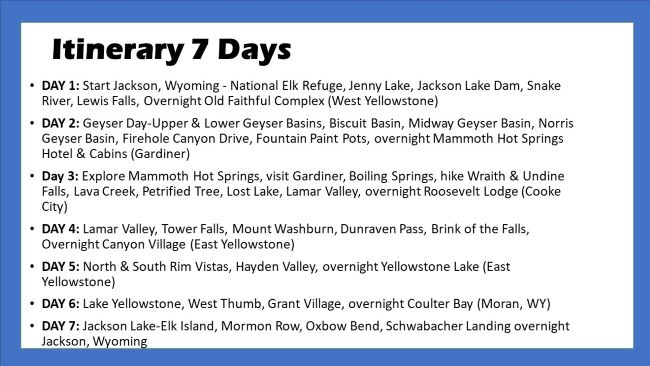
Your Gateway to Yellowstone & Grand Teton: Guide for Getting to the Parks
Planning your trek to Yellowstone and Grand Teton National Parks starts with choosing the right gateway. The closest airports are Jackson Hole Airport (JAC) near Grand Teton and Yellowstone Airport (WYS) in West Yellowstone, both offering daily flights from major U.S. cities. For our 7-day adventure itinerary, we flew into Jackson Hole—a perfect launchpad for exploring the parks. Prefer a longer road trip? Many travelers begin their journey in Salt Lake City, Utah, or Bozeman, Montana, adding scenic drives through the Rockies to their Yellowstone Grand Teton itinerary.
Both parks are road trip-ready! Major highways like I-90, I-25, and US-191 connect seamlessly to park entrances, making self-drive adventures ideal for flexibility. Cruise along John D. Rockefeller Jr. Memorial Parkway between Yellowstone and Grand Teton, or take the Beartooth Highway (seasonal) for jaw-dropping alpine vistas. Whether you’re mapping a weeklong trek through Yellowstone & Grand Teton or prioritizing iconic stops like Old Faithful and Jenny Lake, strategic route planning ensures you maximize every mile of America’s wildest landscapes.
Pro Tip: Book flights and rental cars early—especially for summer trips—to lock in the best rates for your Yellowstone Grand Teton adventure itinerary!

Stay Prepared: Essential Gear for Your Yellowstone Grand Teton Itinerary
A comprehensive packing list for your trip to Yellowstone and Grand Teton National Parks, designed to prepare you for changing weather, ensure wildlife safety, and enhance your outdoor experiences:
Clothing Essentials
- Moisture-wicking base layers
- Insulating mid-layers (fleece or down)
- Waterproof and windproof outer shell
- Quick-drying hiking pants
- Warm hat, gloves, and neck gaiter
- Durable, well-broken-in hiking boots
- Additional wool or synthetic socks
Gear & Essentials
- 20-30L daypack with a rain cover
- Bear spray (mandatory, available for rent)
- 2-3L water bottles or hydration system
- Water filter or purification tablets
- Headlamp with spare batteries,
- Flashlight
- Trekking poles
- insect repellent, bug head net
- snacks.
- Sunglasses, sunscreen, and lip balm
- Multi-tool or pocket knife
Safety & Navigation
- Detailed park maps/compass (cell service may be unreliable)
- GPS device or offline maps
- First aid kit
- Whistle and emergency blanket
Extras
Yellowstone & Grand Teton National Parks: Essential Know-Before-You-Go Tips for Your Adventure Itinerary
It is essential to stay informed about all the road improvement projects taking place in Yellowstone, as they could cause some significant traffic congestion. When travelling through these construction zones, it is important to drive cautiously, being vigilant for any workers, machinery, animals, and other potential risks. For information on the upcoming road improvement projects that are likely to cause traffic delays, visit the park website.
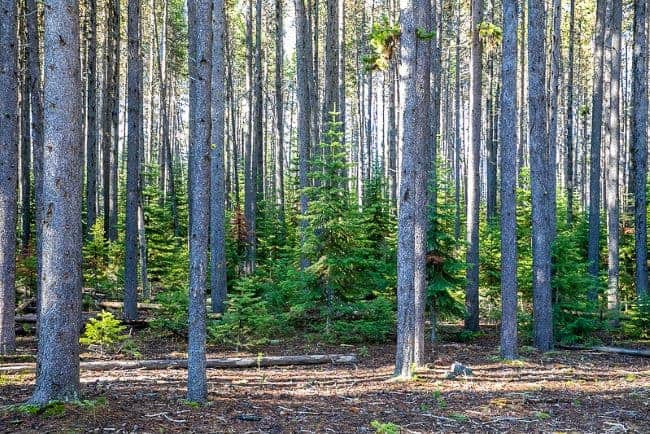
Yellowstone National Park: What Every Visitor Needs to Know
- Yellowstone National Park Entrance Fees: Private Vehicle: $35 (7-day pass), Motorcycle: $30 (7-day pass), Per Person (on foot, bike, or bus): $20 (7-day pass). America the Beautiful Annual Pass: $80 (entrance to all U.S. national parks). Perfect for week-long treks!
- Visitor Hours: Yellowstone is open year-round, although some roads and facilities close during the winter months (typically from early November through mid-April). The park is open 24 hours a day, but some areas and services (including visitor centers and roads) have restricted hours or are seasonal.
- Best Time to Visit: Summer (June to September) is the busiest time, and all the park’s services, roads, and facilities are open. Crowds are bigger during these months. Spring (May to early June) and Fall (September to October) are great alternatives if you like fewer people, especially for wildlife viewing, as some animals like bison and elk are active during these periods. Winter (November to March) is best for a quieter, snowier trip, but many roads are closed, and services are limited. Winter is ideal for snowshoeing, cross-country skiing, and snowmobiling.
- Accommodations: There are several lodging options available in and around the parks, including campgrounds, lodges, and cabins. Book your accommodations early, especially if you plan to visit during peak season.

Grand Teton National Park: What Every Visitor Needs to Know
- Grand Teton National Park Entrance Fees: Private Vehicle: $35 (7-day validity), Motorcycle: $30 (7-day validity), Individual: $20 (7-day validity). Annual Pass: $70 (covers both Yellowstone and Grand Teton)
- Visitor Hours: Similar to Yellowstone, Grand Teton remains open throughout the year. But some roads, services, and facilities (such as visitor centers) are available seasonally only, usually between May and October.
- Visitor centers like the Moose Visitor Center and Jenny Lake Visitor Center are typically open 8 a.m. to 5 p.m. during peak season. Winter hours for these centers are limited.
- Best Time to Visit: Summer (June to September) is a peak season with favorable weather for hiking, wildlife observation, and boating on Jackson Lake. There will be more crowds in this period. Spring (May to June) and Autumn (September to October) are excellent times to come if you are not fond of crowds. Autumn offers spectacular fall color and fine wildlife watching, including elk rutting season. Winter (November to March) is a less crowded season for cross-country skiing, snowshoeing, and winter photography, but wear cold-weather clothing and anticipate limited services.
Pet Policy in the Parks: In Yellowstone and Grand Teton National Parks, pets are permitted but come with certain limitations. They must always be leashed, with a maximum length of 6 feet, and are only allowed in developed areas such as campgrounds and parking lots. Pets are not permitted on trails, in backcountry regions, or near geothermal sites. Additionally, they are not allowed in visitor centers, lodges, or dining establishments.

Yellowstone Lodging Guide: How to Secure Your Adventure Itinerary in America’s First National Park
Planning your trek to Yellowstone National Park? All in-park lodging reservations are managed exclusively through Xanterra Travel Collection, the park’s official concessionaire. Be prepared for a true wilderness retreat: rooms lack televisions, radios, and air conditioning, and Wi-Fi is limited to select lobby areas. I booked a year in advance for our trip.
Pro Tips: Set Calendar Alerts: Mark the 5th of each month (13 months before your trip) to snag prime dates. Flexible Dates? Check for last-minute cancellations, especially in shoulder seasons (May or September). Gateway Towns: If parks book up, consider West Yellowstone, Gardiner, or Cody for nearby hotels.
- Key Booking Details:
- Peak Season Demand: Iconic lodges like Old Faithful Inn and Lake Yellowstone Hotel sell out fast—book as soon as reservations open.
- Advance Reservations: Lodging can be booked 13 months ahead of your stay. Example: On April 5, 2024, you can reserve stays for April 1–30, 2025. On May 5, 2024, bookings open for May 1–31, 2025, and so forth.

Navigating Campground Reservations in Yellowstone National Park
Yellowstone offers a mix of reservable and first-come, first-served campgrounds to accommodate different planning preferences. Here’s a breakdown of the reservation process:
- Reservable Campgrounds (6-Month Advance Booking):
- Sites Include: Slough Creek, Pebble Creek, Mammoth, Indian Creek, and Lewis Lake.
- Reservation Window: Reservations open six months in advance on the first day of each month at 8:00 AM Mountain Time. Example: To secure a spot for July 15, book precisely on January 1 when reservations open.
- Yellowstone Lodges-Managed Campgrounds:
- Sites Include: Fishing Bridge RV Park, Grant, Canyon, Bridge Bay, and Madison.
- Booking Process: Reservations are handled through the Yellowstone National Park Lodges website, which follows distinct policies (e.g., varying booking windows or seasonal availability)

West Grand Loop Lodging: Your Gateway to Comfort and Adventure in Yellowstone National Park
The Grand Loop Road in Yellowstone National Park gives you access to different places to stay in the West Yellowstone area. I think the West Grand Loop Lodging is a great place to stay when you visit Yellowstone National Park. It’s easy to get to and very convenient. Staying in the center of the park offered us a great starting point for our adventure. It was super close to all the geysers and trails. We enjoyed being able to relax and recharge in our comfortable rooms with modern amenities after spending the day exploring the beautiful nature of Yellowstone.
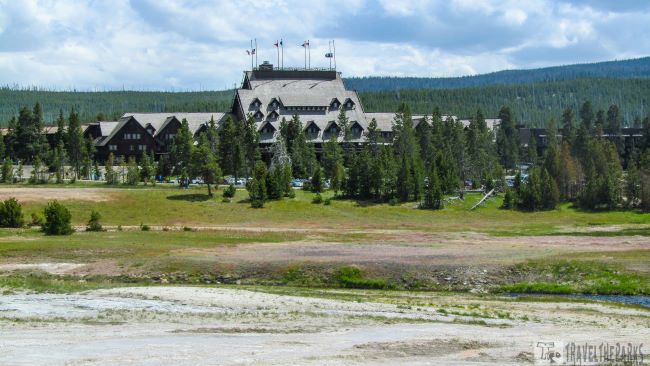
Old Faithful Lodging: Sunrise Views for Your Yellowstone Adventure Itinerary
The area offers several lodging options, including the Old Faithful Lodge Cabins, Old Faithful Snow Lodge & Cabins, and the iconic Old Faithful Inn. The Old Faithful Inn, located just steps from the geyser, is a historic landmark and the world’s largest log structure. We stayed in the Old House Standard Room with Bath, which features a deep claw-footed tub perfect for soaking in the hot water. We especially enjoyed the inn’s proximity to the geyser basin, allowing for early morning walks to take in the stunning surroundings.
The Inn offers a variety of room types, including standard rooms with shared bathrooms, premium rooms with private bathrooms, and suites with sitting areas and fireplaces. The Inn also has a dining room, a gift shop, and a large lobby with a towering stone fireplace.

Mammoth Hot Springs Hotel & Cabins: Historic Lodging & Thermal Terraces in Yellowstone’s Northern Wilderness
The historic hotel, built in 1883, has undergone several renovations and expansions over the years, yet it still preserves its classic charm and architecture. Guests can choose from a variety of accommodations, including hotel rooms, suites, and cabins. The hotel rooms and suites in the main building offer modern amenities such as Wi-Fi, cable TV, and private bathrooms, with some boasting magnificent views of Terrace Springs. The cabins, scattered throughout the property range from rustic to modern, with select units featuring kitchenettes and fireplaces.
During our stay, we opted for a frontier cabin. These cabins come equipped with two queen beds and either a private or shared bathroom, with four offering the added luxury of a private patio hot tub. The hotel rooms, in contrast, provide guests with a choice of a king bed or two queen beds, along with a coffeemaker and refrigerator. Fortunately, we were able to secure a frontier cabin with a private bathroom. The location proved ideal, as we could easily walk to all of our desired destinations.

Grand Loop East Side Lodging: Lakeside Cabins & Lamar Valley Access for Your Yellowstone Trek Itinerary
Roosevelt Lodge & Cabins: Rustic Charm to Add to Your Itinerary Adventure Amidst Yellowstone’s Wilderness
The Roughrider Cabins, in the Lamar Valley area of Yellowstone’s Tower Fall region, offer a rustic and historic lodging experience. Constructed in 1920, the cabins have maintained much of their original rustic charm and character. Guests can choose between two cabin types: Roughrider Cabins with shared bathhouses, or the more luxurious Frontier Cabins with private bathrooms. While the accommodations are relatively basic and devoid of modern amenities, the author fondly recalls watching Mule deer graze from the front porch rockers each morning – a highlight of their stay. For travelers seeking a genuine, back-to-nature experience in Yellowstone, the historic cabins provide an authentic and memorable lodging option, despite lacking certain creature comforts.
The lodge’s dining room offers panoramic mountain views while serving breakfast, lunch, and dinner. Guests can also visit the on-site general store to purchase snacks and souvenirs.
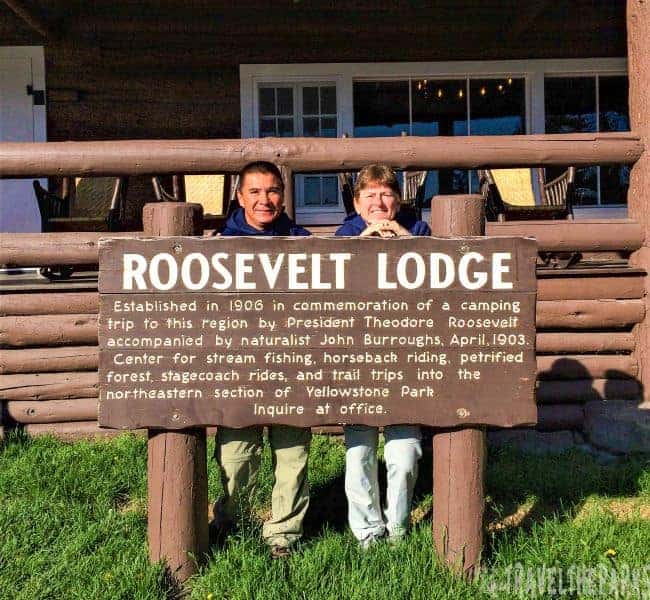
Canyon Lodge & Cabins: A Retreat in the Heart of Yellowstone’s Canyons
The Yellowstone Lodge boasts a fantastic central location near the Grand Canyon of the Yellowstone, Hayden Valley, and the Upper and Lower Falls of the Yellowstone River. The lodge offers a variety of accommodations, including hotel rooms, suites, and cabins. They have five newly constructed LEED-certified lodges. We stayed in a standard lodge room, which featured a single queen bed, private shower bath, and coffeemaker, in a typical hotel-style setup. However, the lodge did not have air conditioning, TV, or radio, and they did not allow pets or cooking.
At first, the light switches in our lodge room perplexed us. We soon discovered that the key card needed to remain inserted, or the lights would automatically turn off, leaving us to shower in darkness. The Duplex-style cabins had an older, rustic aesthetic but featured a full private bathroom. Moreover, some of the Western cabins allowed pets.
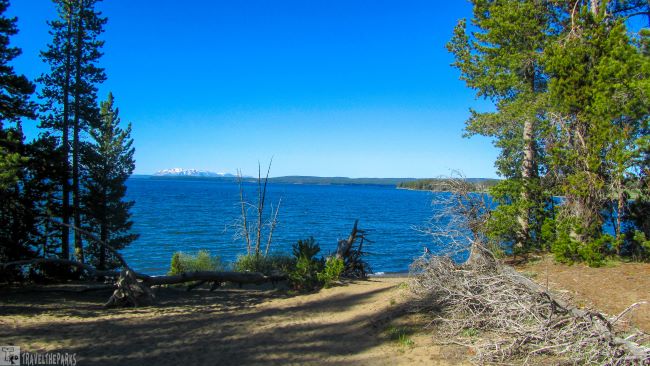
Yellowstone Lake Lodging: Lakeside Serenity at Yellowstone National Park
Magnificent location on the shores of Yellowstone Lake. There are two options either: Lake Lodge Cabins and Lake Yellowstone Hotel & Cottages. They designated the Hotel a National Historic Landmark in 2015. It is a stately hotel with duplex cottages with two double beds and a private bathroom. The hotel rooms have either a queen or king bed and a full bath. I felt the hotel was very elegant and had hands down the best restaurant in the park. The cottages are perfect for early morning walks along the lakeshore and spotting wildlife.

Lake Yellowstone Hotel & Cottages offers several dining options, including the Lake Yellowstone Hotel Dining Room, which serves breakfast, lunch, and dinner, as well as the Lake Yellowstone Hotel Deli, serving sandwiches, salads, and other light fare. The property also features an on-site gift shop.
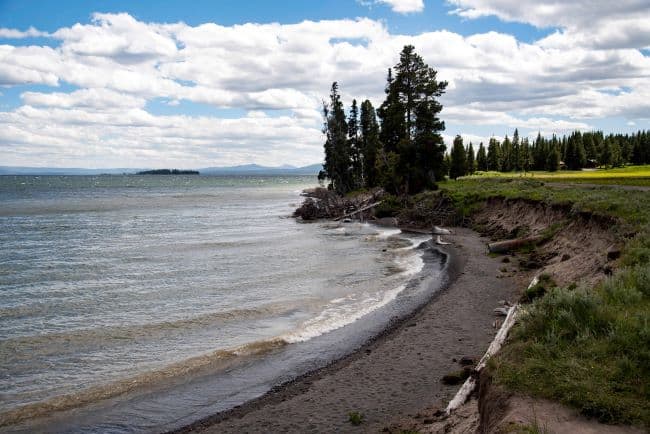
Grant Village Lodge: Your Gateway to Adventure near Yellowstone Lake
The Grant Village Lodge, closest to the West Thumb of Yellowstone Lake, offers modern accommodations. It operates seasonally from mid-May through late September. The lodge made up of two six-story buildings, each containing 52 rooms equipped with two double beds, a coffeemaker, refrigerator, and a private bathroom. While the lodge may appear slightly outdated, its convenient location makes it a popular choice for those seeking easy access to Yellowstone Lake kayak tours.
You can find additional lodging in West Yellowstone, Cody, Cooke City, or Gardiner.
- Shoshone Lodge -East Entrance 40 minutes from Cody – Peaceful, serene, beautiful rustic mountain cabin experience-a true retreat away from our hectic world.
- Campfire Lodge & Campground -They are in the Gallatin National Forest about 20 miles from West Yellowstone. Cabins on the shore of the Madison River for excellent fly-fishing.
- Rusty Hinge Cabin – Airbnb cabin in Cooke City, close to the park and the Beartooth Highway.

Grand Teton Lodging Essentials: Comfort Meets Adventure on Your Yellowstone Trek Itinerary
Colter Bay Cabins: Colter Bay Village offers a range of rustic accommodations, including 208 homestead cabins, tent-cabins, and RV campsites. The cabins feature private bathrooms, double beds, and wall heaters for chilly mornings. Though lacking Wi-Fi and television, these original log cabins in the heart of Colter Village are reasonably priced.
Jenny Lake Lodge: If you want to stay in the heart of Grand Teton National Park near Jenny Lake, these luxury duplex log cabins are an ideal choice. King or Queen beds, each with a private bathroom. Complimentary Wi-Fi and activities. Packages are available. Pricey!

Jackson Lake Lodge – Located more central to Grand Teton NP. A full-service resort hotel with 37 main lodge rooms, and 348 cabins rooms, each with two queen beds. They equip each room with a coffeemaker and a mini-fridge. Complimentary Wi-Fi. Moderately priced.
Headwaters Lodge & Cabins at Flagg Ranch – Located central to Grand Teton & Yellowstone, these log style lodging units have two queen beds or one king bed. The rooms each have a coffeemaker, mini-fridge, and microwave. RV Park with campsites available. No Wi-Fi or cell phone service. Moderately priced.
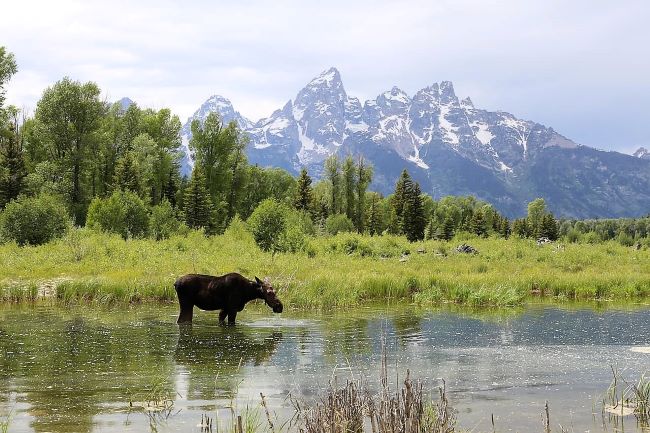
Beyond the Parks: Gateway Lodging & Scenic Stays to Enhance Your Yellowstone & Grand Teton Adventure Itinerary
- Climbers’ Ranch – if you are looking to climb the Tetons, this is the place to stay.
- Dornan’s Ranch Cabins -Location is second to none. 10 mins from Jackson, 1 minute from Grand Tetons NP, 15 minutes from Antelope Flats. And the views of the mountains from there are outstanding.
- Signal Mountain Lodge – When you walk out in the morning, the Tetons are right there. Magnificent!
- Triangle X Ranch – Authentic lodging, dining, & activities in a spectacular Teton mountain range setting.

Hiking Through Grand Teton: Day 1 Adventure Guide – Exploring Nature’s Marvels and Must-Do Activities
Welcome to the breathtaking Grand Teton National Park! Your hiking adventure begins with a day that promises to be truly unforgettable. Immerse yourself in nature’s wonders and exhilarating activities. Now, let’s dive into our personalized adventure guide.

Day 1 Trek in Grand Teton: Your Ultimate Guide to Planning an Unforgettable Adventure
Allocate at least two days to explore Grand Teton National Park. Many visitors start and end their itinerary in Jackson. We began our day early by driving to the southern part of the park, where Jenny Lake is located. Stunning mountain scenery, including the Teton Range, surrounds Jenny Lake. Continuing toward Moose, we took the Teton Park Road, making stops at overlooks to capture photos of the Teton Range and learn about the area’s geology.
Where should you stop first? The Jenny Lake Visitor Center is a great first stop, open daily from 8 a.m. to 7 p.m. This popular destination on the lake can get quite crowded, so it’s best to arrive early to beat the heavy traffic. At the visitor center, the rangers at the information kiosk can provide helpful information, including backcountry trail permits, wildlife viewing recommendations, and boat shuttle schedules. There are also interactive exhibits for kids to enjoy. Overall, the Jenny Lake Visitor Center is an ideal starting point for exploring the scenic area.

Action-Packed Adventure at Jenny Lake: Must-Do for your Itinerary
This area of the park offers a variety of water activities for visitors. Guests can rent canoes, kayaks, or rowboats to explore the lake independently, or take a scenic boat tour led by the park. The park operates their own boat tours, providing a unique perspective of the lake and surrounding mountains. Jenny Lake is home to several species of fish, including cutthroat trout, lake trout, and brook trout. Visitors can fish from the shoreline or by boat, with a valid fishing license required.
We chose to take the first early morning shuttle boat across the lake to the Cascade Canyon trailhead. The shuttle service is very reasonably priced.
Once we disembarked, we found there were lots of hiking trails for all skill levels. Remember, you can shorten any trail by turning back at any point. We always recommended carrying snacks and have water with you. Hiking trails accessed by the boat shuttle are:
- Cascade Canyon Trail – is a moderate 9.7 out and back trail with an elevation gain 1,128 ft.
- Jenny Lake Trail – is a moderate 7.9 mile loop trail good for seeing wildlife.
- Hidden Falls – a short walk to Hidden Falls, a beautiful waterfall. The trail underwent recent improvements and is now only about 0.3 miles long, making it suitable for all ages and abilities.
- Inspiration Point Trail – is a moderate 1.8 mile out and back trail starting at the Jenny Lake Boat dock. Superb views of the lake from the top.

Day 1 Itinerary: Scenic Jenny Lake Drive – A Breathtaking Journey
The Teton Road is a part of the 42-mile scenic trek. Take the Jenny Lake Loop Road around the lake for scenic views of the lake and surrounding mountains. The one-way loop starts at the South Jenny Lake Junction, and it takes about an hour to complete without stops. However, it’s recommended to take your time and stop at various points or hike along the way to fully appreciate the natural beauty of the area. The trail to picturesque String Lake is relatively flat and is suitable for all skill levels, making it a great option for families with kids. Kids will also discover that the lake is a great place to swim in the summer.

If you have the time, take the winding Signal Mountain Summit Road to the 7,720-foot peak. The long, serpentine drive is worthwhile-rewarding you with magnificent panoramic views of the green valley below.
Consider stopping for a picnic lunch at the Jackson Lake dam, where you can watch anglers reeling in trout and salmon. During our visit, a lone magpie even tried to swipe a few morsels from our meal.

Journey Through Yellowstone: Your Ultimate 7-Day Itinerary – Must-Do Activities from Day 1 to Day 7
The drive from Grand Teton National Park to Yellowstone National Park’s south gate entrance following the John D. Rockefeller, Jr. Memorial Parkway. A part of the Greater Yellowstone Ecosystem, this scenic route that offers breathtaking views of the Teton Range and the surrounding Wyoming countryside. The distance between the two parks is approximately 45 miles, and the drive takes around 1 hour and 15 minutes without stopping.

Day 1 Trek in Yellowstone: Your Adventure Begins – Essential Tips and Must-See Highlights
Once you reach the south entrance station to Yellowstone National Park, you can take your picture in front of the Yellowstone National Park sign. There are also spectacular views of the Snake River gorge from the overlook. The entrance fee for the park is 35 dollars (good for 7 days). Instead, we recommend purchasing America the Beautiful pass for $80. The pass is good for one year and helps fund our national parks.
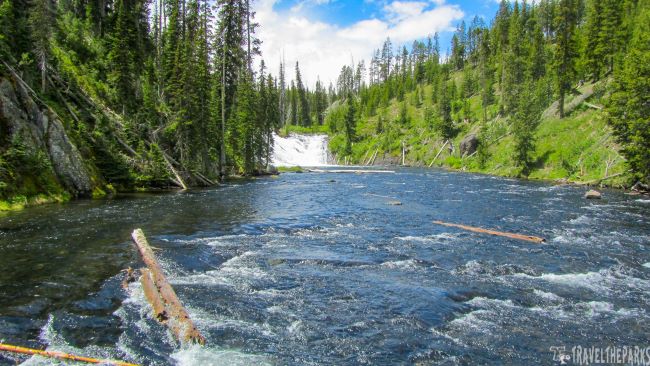
The south entrance road traces the path of the Lewis River as it flows through the park and eventually joins the Snake River. While you can view Lewis Falls from the road, the real payoff comes from hiking up the nearby hillside for a close-up look at the cascading waters. This waterfall bears the name of Meriwether Lewis, the famous American explorer and co-leader of the Lewis and Clark Expedition. The hike provides an excellent photo opportunity, and you can even plan a picnic or snack break at the nearby Lewis Lake a little further down the road.
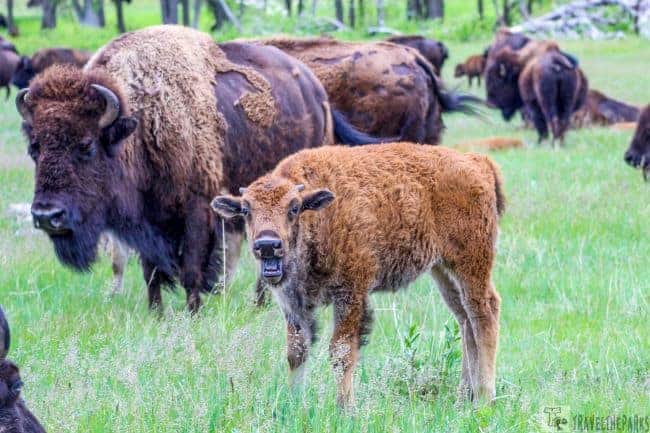
Grand Loop Adventure: From Black Sand Basin to Old Faithful – Day 1 in Yellowstone National Park
Follow the Southern entrance road until you reach its intersection. Turn right onto the Grand Loop Road, the primary thoroughfare that loops (figure-8) through Yellowstone National Park, connecting its major attractions and landmarks. Be sure to stop for photos at the continental divide before heading to the Black Sand Basin to catch your first glimpse of a geyser. The basin’s dark-colored sand surrounds the hot springs and geysers in the area, which covers about 10 acres and contains several colorful features. The easy 0.3-mile boardwalk trail allows you to view notable geysers like Black Sand Pool, Emerald Pool, and Sunset Lake.

Day 1 – Old Faithful Complex: Exploring the Iconic Geysers and More in Yellowstone National Park
Head to the Old Faithful complex area. We overnighted at the Old Faithful Inn. there are plenty of dining options at the Old Faithful Inn complex to suit any taste or budget. The Old Faithful Inn Dining Room serves up breakfast, lunch, and dinner. The menu features classic American cuisine. We had dinner here the first evening. After our delicious meal, we walked through the Upper Geyser Basin. There are two loops on this 2.1-mile boardwalk. First, we walked the upper loop to Observation Point & Geyser Hill. I think the most interesting geyser here was Beehive Geyser, just as the name suggests, the 4-foot cone resembles a beehive.
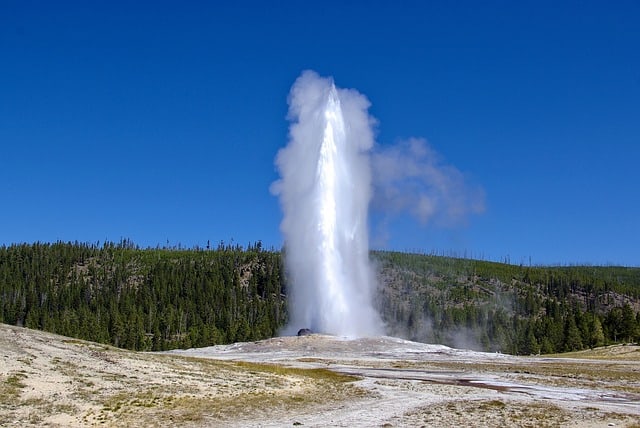
Day 2 Trek in Yellowstone: Exploring Hidden Gems and Natural Wonders – Your Comprehensive Guide
Start your morning on the upper deck of Old Faithful lodge watching Old Faithful Geyser erupt. Old Faithful is the most famous geyser in Yellowstone National Park. Old Faithful erupts approximately every 90 minutes, shooting a column of water and steam up to 185 feet into the air. The visitor center will have eruption times posted for all the predictable geysers. After a light breakfast, our day begins with a leisurely walk through the lower section of the Upper Geyser Basin enjoying the colors of Morning Glory Pool and watch Castle geyser roar erupting 30-feet into the air. A splendid start to your day!

Begin Your Day 2 Adventure at Biscuit Basin: Vibrant Geothermal Wonder of Yellowstone
Across the Grand Loop Road from the Upper Geyser Basin lies Biscuit Geyser Basin, which can be accessed directly from the road. Despite its proximity to popular attractions like Old Faithful and Midway Geyser Basin, visitors often overlook Biscuit Basin. However, this basin is well worth a visit, featuring a variety of captivating geothermal features, including hot springs, geysers, and mud pots. The basin’s highlight is the remarkable array of colors in the hot springs, which range from deep blue to bright orange and yellow – a truly unique and awe-inspiring sight.
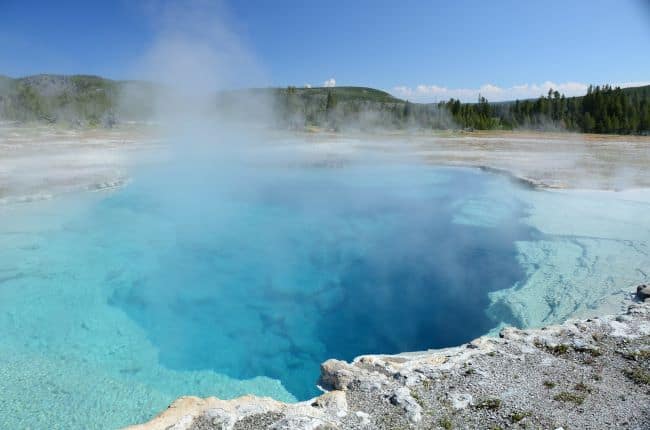
Since we arrived so early, we hiked to the 70-foot Mystic Falls. We highly recommend this 2.4-mile round trip loop. It begins with a gentle uphill climb through a forest of lodgepole pine and Douglas fir trees. Along the way, we enjoy beautiful views of the surrounding mountains and the Firehole River. The trail gains about 500-feet elevation. On the lighter side walk the 0.6-mile looping boardwalk that winds through the thermal area, offering close-up views of the geothermal features. Although this is a short walk, you will see seven inspiring geysers, including Sapphire and Jewel geysers are the most extraordinary to photograph.

Day 2: A Walk through the Majestic Midway Geyser Basin
Home to the Grand Prismatic Spring and Excelsior Geyser, Midway Geyser Basin is a short walk. Grand Prismatic Spring is approximately 370 feet in diameter and is one of the largest hot springs in the world. The Grand Prismatic Geyser is known for its brilliant, vibrant colors, which range from deep blue in the center to bright orange and yellow around the edges.
For an exceptional view of the geyser, we took the Fairy Falls trail located one mile south of the Midway Geyser Basin and hiked to the overlook is approximately 0.8-mile. However, the new the Grand Prismatic Overlook Trail is approximately 1.6 miles round trip. It is moderately strenuous because of the incline, but the end views will make it so worthwhile. We took 1-2 hours visiting the Midway Geyser area.

Day 2 Adventure Itinerary- Lower Geyser Basin and Firehole Drive: A Scenic Excursion
The Lower Geyser Basin Is just a few miles down the Grand Loop Road. Spread out over a large area, this basin is approximately 18-miles. Comprising this basin are two different areas: Fountain Paint Pots and Firehole Lake Drive. The Firehole Lake steams and hisses as you walk along the trail that encircles the lake. Seen from the roadway, the Great Fountain Geyser erupts in spurts. White Dome Geyser is a striking pink cone. Be patient! This is a prime location for bison, and jams are common when the herd takes to the roadway.
Fountain Paint Pots are a peaceful walk, although more spread out. The exceptional feature here includes the constantly erupting Clepsydra Geyser, the Celestine Pool, and Silex Spring with their deep sapphire-colored pools. The sounds of bubbling mud pots and smaller hissing vents dominate this landscape. Firehole Canyon Drive is a short, one-way drive along the Firehole River. The deep gorge has rushing rapids, Firehole Falls, and the local swimming hole.

Day 2 – Norris Geyser Basin: Witnessing Nature’s Fiery Spectacle in Yellowstone National Park
This basin is near Madison Junction and divided into two sections, the Porcelain, and Back basins. Looking over the barren Porcelain basin, you can visualize this volatile landscape. Mostly paved the pathways of Norris Geyser Basin form into two loops. The Black Gowler Steam Vent does just that growls, billowing steam into the sky. The Back Basin is a longer loop in a serene lodgepole forest. Congress Pool is the most mesmerizing. Pressed for time, take the time to see the Steamboat geyser. It is closest to the Norris Geyser Basin information station.
The Grand Loop Road continues north towards Mammoth Hot Springs. The road passes Nymph Lake, Roaring Mountain, and Apollinaris Spring thermal areas. Sheepeater Cliffs is a large basalt column formed by cooling lava. Have a snack break and stretch your legs. A small gravel parking lot leads to the area. Finish your day in Mammoth Hot Springs. Mammoth Village has many services, including accommodations, restaurants, a visitor information center, post office, and fuel. If you have time this evening, watch the many elk that frequent the green lawns, and the ground squirrels are pretty comical.
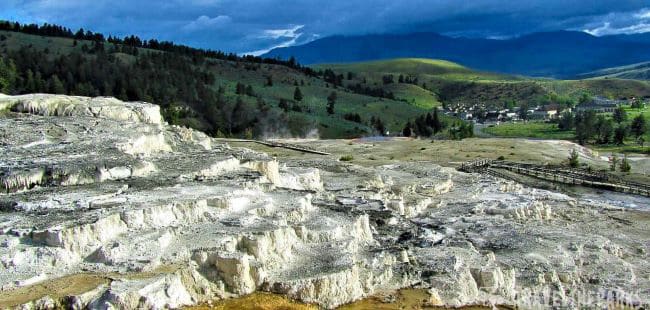
Day 3 Trek in Yellowstone: Exploring Wildlife and Untamed Beauty – Your Unforgettable Adventure Continues
Let’s continue your Day 3 adventure in Yellowstone, exploring wildlife and untamed beauty, and including a visit to the stunning Mammoth Hot Springs Terraces. The flow of hot water formed these unique terraces through limestone, creating stunning and otherworldly mineral formations.

Begin Day 3 at Mammoth Hot Springs Terraces: Nature’s Sculpted Masterpiece
This morning, after a hearty breakfast, visit the Upper & Lower Terraces in Mammoth. The Lower Terraces are accessible by a wooden boardwalk and a peaceful walk from the hotel. What makes these geothermal features different from others in the park are the terraces. The boardwalk is a sensory experience in sound, color, and smell. The continuous flow of silica-rich water formed these huge travertine terraces. Directly above the village on the hillside are the Upper Terraces. The one-way road gives another perspective. These seething springs give way to an eerie sight. Canary Spring is otherworldly with its encased trees all covered in white silica. The beautiful views of the Gardiner Mountains as a backdrop.

Day 3 Adventure Itinerary: Follow the River to Gardiner, Montana: Discovering Scenic Beauty and Small-Town Charm near Yellowstone
Mammoth Hot Springs is located closest to the park’s northern entrance. At Mammoth junction, take the turn north to Gardiner. A set of switchbacks descend into the valley, as the road follows the Gardiner River. You can 2-miles down the road stop at the Boiling River Trailhead if the weather permits. The river forms a jacuzzi of sorts where the hot spring runoff meets the colder Gardiner River. A refreshing dip in the river is a must in the summer months.

NOTE: Currently there is no swimming due to the damage from the floods in June 2022.
If you want to take photographs of the rushing river waters, Rescue Creek Trailhead bridge is an ideal location only another mile down the roadway. Gardiner is a prime location to restock your groceries or do a bit of shopping. They also offer river rafting excursions. You will drive through the Roosevelt Arch on your way back into the park. Appreciate the arch history, look for the inscriptions “Yellowstone National Park” and “Created by Act of Congress, March 1, 1872.”

Day 3 Guide – Spectacular Undine Falls: A Hidden Gem on Your Yellowstone Adventure
From Gardiner, make your way northeast, turn left on the Grand Loop Road towards Tower Junction. Bears frequent the woods along this section of the road, so keep a watchful eye. The 60-foot falls are easy to photograph from the roadway. No hiking needed to reach these falls. However, if you have the stamina and want to get closer to the falls, there is a trail near the Lava Creek Bridge.

Day 3 – Lava Creek Picnic Area: A Scenic Spot for a Memorable Picnic Lunch in Yellowstone
This is picnic area is near the Lava Creek Bridge. This is a wonderful place to take a quick break or have lunch. Stretch your legs with a brief walk along the creek before continuing your journey. Stop at the Wraith Falls Trailhead. This is a short, 0.5-mile trail. Keep a wary eye out for bison as you pass through a mountain meadow filled with wildflowers. The trail ends at a small observation platform. Here you can view the 100-foot fall as it cascades down the rock face.

Day 3 -Exploring the Petrified Tree & Scenic Hiking on the Lost Lake Trail
The Grand Loop Road parallels the Gallatin Range, cutting through upland meadows and ridges. Blacktail Plateau Drive is a one-way unimproved gravel road that returns to the Grand Loop after 6-miles. If you want to escape the crowds, the forests and panoramic meadows are peaceful, although you will have to drive slowly. Just 1.5-miles before Tower Junction is the spur road for the Petrified Tree. A short trail leads up an incline to the tree. To protect, they have placed fencing around the tree. Bison and bears frequent this valley. Excellent spot for wildlife sightings. From this location, you can access the trail to Lost Lake. Lost Lake is a short, tranquil hike to a small lake. Tower Junction is home to Roosevelt Lodge. This is an ideal location for an overnight stay. They have an Old West Cookout Dinner that is outstanding!!

Day 4 Adventure Trek in Yellowstone: Lamar Valley Wildlife Encounters
Start your day early and head to Lamar Valley, often referred to as the “Serengeti of North America.” This area is famous for its abundant wildlife, including bison herds, elk, pronghorn, wolves, bears, and various bird species.
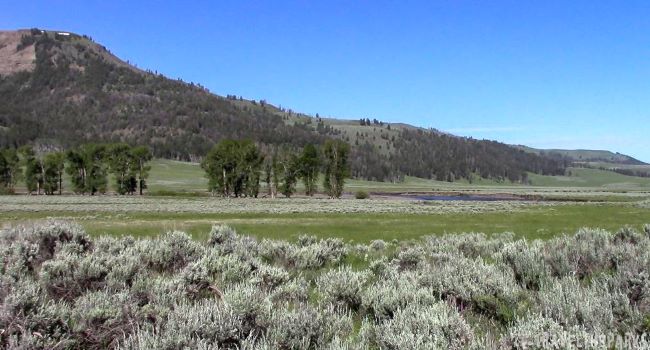
Day 4 – The Extraordinary Lamar Valley: Untamed Beauty in Yellowstone
Start your day by eating breakfast at the Roosevelt Lodge to get an early start for wildlife viewing in the Lamar Valley. Always have your camera ready – this is the best tip for a drive into the Lamar Valley, home to herds of bison, wolves, bears, and more. The best viewing is typically in the early morning or late afternoon near sunset, as the road follows the Lamar River for a suitable distance, allowing access to many trails along the highway. Stop at different pullouts, such as Slough Creek, Soda Butte, and Pebble Creek, where you may encounter local photographers willing to share insights on wildlife sightings and let you peek through their spotting scopes. At Pebble Creek, we had the fortune of a park ranger sharing her spotting scope, through which we could view mountain goats and grizzlies.

If you have more time in the schedule, consider staying overnight in Cooke City and spend a day traveling the Beartooth Highway. If not, have lunch in Cooke City or turn around at Pebble Creek for the return trip through the valley. Keep a watchful eye on wolves and bears. At Tower Junction turn towards Canyon Village. Calcite Springs Overlook is a few miles down the road. Here you get food views of the Yellowstone River as it courses through the valley.
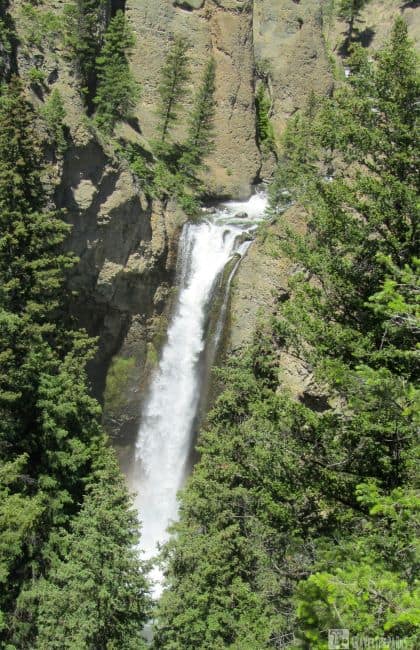
Day 4 – View the Tower Fall: A Majestic Cascade Amidst Yellowstone’s Towering Peaks
Tower Fall has a good general store, and it is popular with park visitors. Especially for ice cream and snack foods. The trail to Tower Fall is closed. However, the end of the parking lot gives you a small glimpse of the fall. The overlook has better access to the fall for photographs.
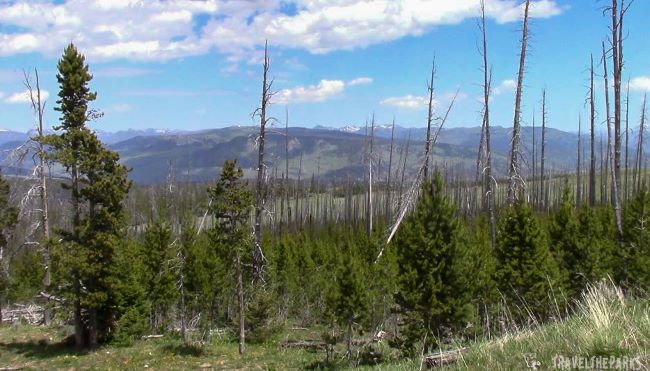
Day 4 – Mount Washburn to Dunraven Pass: An Epic Hike through Yellowstone’s Alpine Beauty
The 2.5-mile hike up Chittenden Road to the summit of 10,243-foot Mount Washburn offers exceptional 360-degree views of Yellowstone National Park. With a steady incline the entire way, the 3-4 hour trek provides the chance to spot majestic bighorn sheep along the mountainside. At the top, park rangers staff the fire lookout station. Here you will find restrooms and an information desk.
Dunraven Pass wayside has excellent views of the forest valley. You can still see the scars left by previous wildfires. Fresh growth is slowly emerging. The wildflowers are beautiful in the springtime. If you are lucky, you will see the remaining remnants of snow at the Dunraven Road Picnic Area. Dunraven Pass often experiences poor weather, therefore, always check before crossing over the mountain.
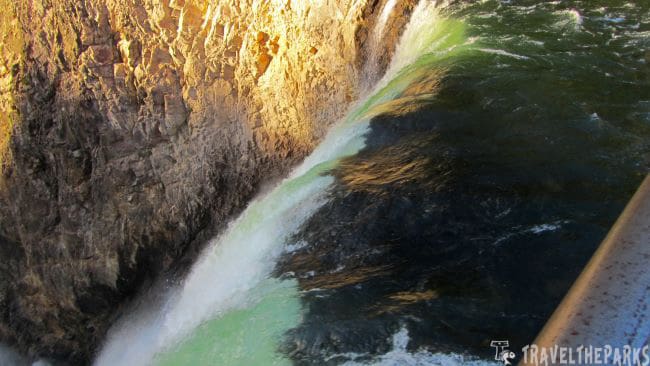
Day 4 – Canyon Village Complex: Exploring the Grandeur of Yellowstone’s Canyon and Beyond
Canyon Village has accommodations, restaurants, a visitor Center, groceries, and fuel. The Village is a suitable central location to access all areas of the park. Check-in at the lodge, enjoy a nice dinner before watching the sunset at the Brink of the Lower Falls.
The Brink of the Falls trail is the first viewpoint on the North Rim Road. It is a steep 0.8-mile descent down to the river. Perch atop the 308-foot Yellowstone Lower Falls is the observation platform. To witness the falls in person is incredible. This is a superb way to end your day!
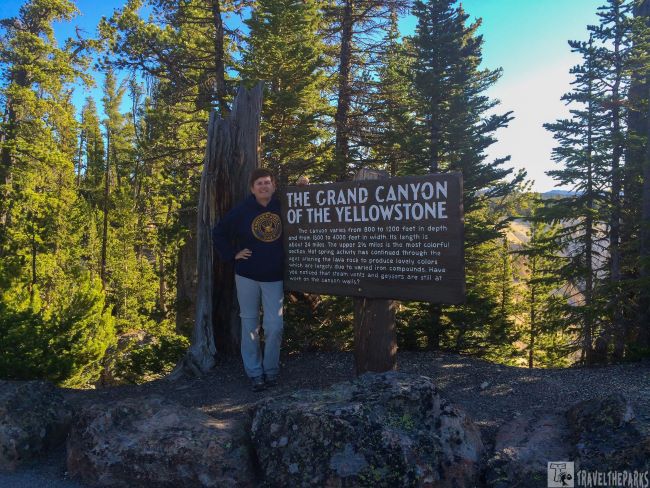
Day 5: Plan Your Yellowstone Trek – Geyser Eruptions, Canyon Hikes & Wildlife Safaris in a Single Adventure Itinerary
Canyon Village has a few locations that serve breakfast. If you are an early riser, purchase a snack the night before and watch the sunrise at the Brink of the Lower Falls or Inspiration Point. The Brink of the Falls trail is a magnificent place to photograph the sunrise. Today experience the Grand Canyon of Yellowstone.

Day 5 – North Rim Road Vistas: Scenic Delights and Overlooks in Yellowstone’s Inspiring North Rim Road
The one-way North Rim Road has many vistas overlooks. Try to at least stop at a few of them. The Brink of the Upper Falls has two vantage points for viewing the 109-foot falls.
Each has a fresh perspective of the Grand Canyon of Yellowstone. Lookout Point gives you full views of the Lower Falls and is the start of the Red Rock Point Trail. This trial is a good workout. A 0.4-mile path descends 500 feet. At the observation platform, you can hear the roar of the falls. They named this trail for the large rust-colored rock outcropping beside the platform. Grandview is just that a grand view, an enjoyable place to take a break and listen to the river in the canyon below. Inspiration Point is a quick walk to a rock outcropping and an observation platform with marvelous views of the 1,000 foot deep Yellowstone River gorge.
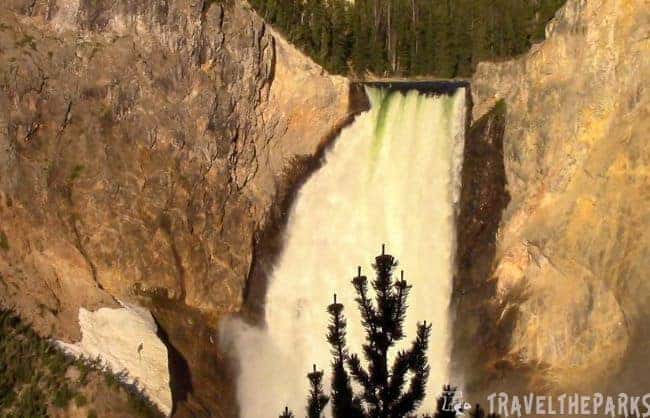
Day 5 – South Rim Road Vistas: Sensational Canyon View in Yellowstone National Park
If time permits, explore the South Rim Trail. The trail parallels the canyon rim for 1.75-miles passing both Uncle Tom’s Cabin and Artist Point.
Uncle Tom’s Cabin is probably the most memorable hike. Overcoming your fear of heights rake the 300 steps to see breathtaking views, feeling the power of the Lower Falls. It requires comfortable shoes for this strenuous hike. Perhaps the most photographed overlook in the canyon is Artist Point. Excellent views both up and down the canyon. The deep walls of the canyon have unique colors as the light changes throughout the day. If you look closely, you can see the puffs of steam from the geothermal vents near the river’s edge.

Day 5 – Hayden Valley: Following the Yellowstone River
Next, enjoy a leisurely drive through the Hayden Valley. This valley was an ancient lake when Yellowstone Lake was larger. Today, the river cuts through the lush valley. This is another premier location to see wildlife. Expect to see large herds of bison grazing on the green grasses that blanket the valley floor. There are a few longer day hikes that take will some planning. The 19-mile Mary Mountain-Nez Perce Trail leads across the valley, climbing through pine forest before skirting Mary Lake and descending to Firehole Lake Drive. Be sure to carry bear spray, as the bear activity is at a higher level here.

Day 5 – Mud Volcano: Unveiling the Unusual and Dynamic Formations of Yellowstone National Park
Stop at the Mud Volcano, a 0.7-mile boardwalk takes you to unique geothermal features that have bizarre names such as the Dragon’s Mouth Springs, Black Dragon Caldron, and Sulphur Caldron. All these geysers are an assault on the senses. The smell is intense.

The Hayden Valley is a pleasant place to stop for your lunch break. Try Otter Creek, Cascade, Nez Perce Ford picnic areas, or the LeHardy Rapids picnic area. Both Otter Creek and Nez Perce Ford are directly on the river, however, the latter is further off the road, so more serene-a hidden gem. Le Hardy Rapids along the Yellowstone River are also a popular spot, listening to the rushing waters of the river. A boardwalk takes you down 100 feet and along the shoreline. Look for cutthroat trout in the clear waters. In July, fly-fishing for these stealthy trout is a worthwhile pursuit.
Lake Yellowstone is an ideal overnight location. Spend your evening in one of the rocking chairs on the porch overlooking Lake Yellowstone, sipping a drink. We spent a pleasant evening being serenaded by the string quartet in the lobby after a fabulous dinner.
Day 6 in Yellowstone Guide: Alpine Lakes and Geothermal Marvels – A Day of Natural Phenomena and Exploration
Begin your day with a leisurely stroll around Lake Village, then head to Fishing Bridge. Constructed in 1902, the bridge was once a popular spot for anglers to catch the native Cutthroat trout. However, overfishing depleted the population, leading to a ban on fishing from the bridge and within 100 yards of the shoreline.

Day 6: Plan Your Trek – Fishing Bridge Wildlife Hotspot, Fly-Fishing & Riverside Hikes Along Yellowstone’s Diverse Ecosystem
The Fishing Bridge General Store, in front of the RV park, offers an excellent breakfast experience. Tucked away in the back of the store is a charming diner that transports you to the 1960s. The food is delightfully tasty, and the general store is stocked with everything you need to restock your supplies. In the mornings, the inviting fireplace provides a cozy spot to warm up.
The Fishing Bridge Visitor Center and Trail Museum sits across the road. Constructed in 1931 using native logs and river rocks, the facility blends seamlessly into the surrounding forest. Inside, you can explore exhibits showcasing the area’s native mammals and birds. Consider attending a ranger-led program at the on-site amphitheater. For a scenic walk, stroll along the Yellowstone Lake shoreline and search for animal tracks in the sand. You may also want to visit the nearby Bay Bridge and Natural Bridge hiking trail.

Day 6 – Bay Bridge Marina Adventure: Boating Lake Yellowstone and Hiking the Natural Bridge Trail
The Bay Bridge Marina serves as the departure point for boat excursions on the lake. Narrated scenic boat tours aboard the Lake Queen transport visitors around Stevenson Island, where they can view the remnants of the historic E.C. Waters. An interesting tale surrounds the history of this vessel. Visitors can also rent motorboats, canoes, or kayaks to freely explore the 140-mile Yellowstone Lake shoreline. Fishing excursions, lasting approximately 2 hours, are available as well, with all necessary equipment included in the price. Guests are encouraged to inquire about having their catch prepared for dinner, as all non-native Lake Trout must be removed from the lake.
The 1.1-mile Natural Bridge trail begins at the marina. There is also access at the campground. The water from Bridge Creek carved the Natural Bridge from the surrounding rock. The level trail passes through pine woods before following a service road. If you want close-up views of the top or backside, you will have to scramble up the rocky side trail. The Natural Bridge is best photographed in the morning when the sun is lower in the sky.
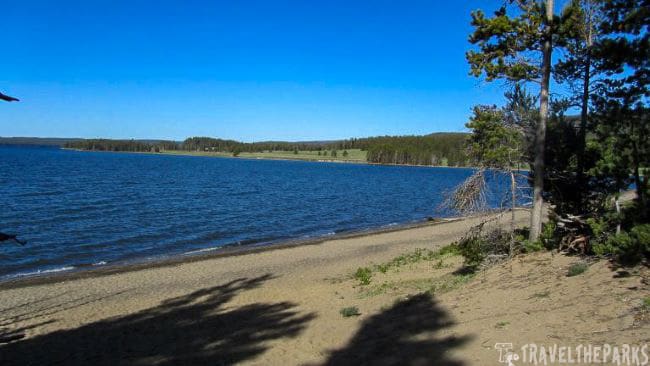
Day 6 – Detour to Gull Point: A Scenic Drive
Tired of the hustle and bustle on the grand loop? Try taking a scenic detour along the lakeshore. The road hugs the shoreline before returning to the Grand Loop Road. Take the turnoff into the old-growth forested at Gull Point. Park in the picnic area in the shade of the trees. Follow the beach out to the end of the sandbar. The cove is a great place to photograph birds since it is a prime waterfowl habitat. This is also a popular fishing spot. We tried but caught nothing.

Day 6 – West Thumb Geyser Basin: Exploring Yellowstone’s Unique Geothermal Features by the Lake
This West Thumb Geyser Basin does not see the crowds like other areas in the park. There is a short loop boardwalk that passes most of the hot springs, geysers, and fumaroles. The view from the boardwalk over Lake Yellowstone is quite dramatic with the backdrop of the snow-capped mountains. The deep blue sapphire color of the Black Pool is the most stunning!
A couple of trails are originating from the parking lot – Duck Lake and Yellowstone Lake Overlook trail. They are short, relatively easy trails, however, some stretches have steep inclines.

Day 6 – Grant Village: A Rare Jewel Inside Yellowstone National Park – Exploring Nature and History
The village of Grant is an ideal spot for a picnic lunch. Located just a mile off the Grand Loop Road, it sits directly on the shores of Yellowstone Lake, offering a relaxing, forested setting. The campground and picnic area provide a peaceful ambiance, while the Visitor Center features educational displays on the crucial role of fire in the Yellowstone ecosystem. Visitors can also watch the film “Experience Yellowstone and Ten Years After the Fire” at the on-site theater. And at the Lakeshore Pavilion overlooking West Thumb Bay, benches invite guests to sit and take in the breathtaking views.

Guided kayak tours from Grant Village paddle along the shores of the lake to Potts Geyser Basin, which is not open to the public. This tour is unique in that you get close to underwater fumaroles. Often seen on the edge of the lake are grizzly bears, wolves, bison, and elk. Eating lunch on a secluded beach while looking for animal tracks is the highlight for some.
You can overnight in Grant Village or make the trek to Jackson Lake lodging in Coulter Village. Both have good walking trails along the beach that are quite pleasant for an evening stroll.

Day 7: Plan Your Grand Teton Farewell Trek – Alpine Vistas, Lakeside Trails & Final Wildlife Encounters for Your Adventure Itinerary
Jackson Lake has breakfast cruises to Elk Island. This tour was our bucket list of adventure, and the cruise was the perfect ending. The lake was like a sheet of glass, with amazing views of Mt. Moran and the Tetons! The Jackson Lake Cruise Company does day cruises and sunset dinner cruises too. If you prefer a unique dining opportunity on horseback, try an authentic western experience. You could also book a lazy dinner float trip.

Day 7 – Scenic 42-Mile Loop Viewpoints: Farewell to Grand Teton National Park
Today, we also complete the last leg of the 42-mile scenic loop started on day 1.
- Oxbow Bend Turnout -On a sunny day, if the water is calm, it reflects the Teton Range in the water, and it all takes your breath away. Occasionally a moose will fjord the river providing the perfect photograph.
- Cunningham Cabin – This is one of the last remaining historic homesteader cabins built in the 1800s.The cabin offers a glimpse into the past. Just imagine how the pioneers must have lived.
- Snake River Overlook – Ansel Adams immortalized this location in 1942. This is where he took one of his iconic photographs in Grand Teton. The lighting is best in the early morning.
- Schwabacher Landing – Flat, easy hike to the Snake River for a picturesque view of the Tetons. The beaver ponds are the ideal habitat for ducks and moose.

Day 7: Antelope Flats Road and Mormon Row
Turn east at Antelope Flats road to access Mormon Row. The sagebrush flats are a prime area for grazing bison and pronghorn. Pick up trail maps in the parking lot. They settled on Mormon Row in the late 1890s. The famous John Moulton Barn and T. A. Moulton Barn are the iconic structures most come to see. They are perhaps the most photographed anywhere in the world. The barns, along with the backdrop of the Tetons, are simply breathtaking!

Important Safety Reminders and Tips in the Parks: Ensuring a Memorable and Safe Adventure
Congratulations on planning a 7-day itinerary to visit Grand Teton and Yellowstone National Parks!
- Respect wildlife: While it may be tempting to get close to wildlife for a photo or a better look, it’s important to give animals plenty of space and never approach them. Take the Yellowstone Pledge – Stay 100 yards from bears and wolves. Stay 25 yards from all other animals.
- Never feed wild animals, including birds and squirrels.
- Stay on marked trails: The park has a vast network of trails for hiking, but it’s important to stay on marked trails to avoid getting lost or damaging fragile ecosystems. STAY ON THE BOARDWALKS, otherwise you could easily damage the fragile thermal features.
- We prefer to eat lunch or a light breakfast while experiencing parks. We pack a collapsible cooler just for this purpose. Remember to store all food appropriately. Bears have a keen sense of smell.
- Take advantage of the water refill stations at visitor centers throughout the park. This saves having to recycle plastic bottles.
- Be prepared for the unpredictable weather in these parks, which can necessitate unexpected detours or delays. Have a flexible mindset and be ready to adapt your plans as needed.
- Dress in layers of clothing, as temperatures can vary widely throughout the day. Also, bring comfortable hiking shoes, sunscreen, and insect repellent.
- For a crowd-free, wildlife-filled experience, plan to rise early and explore the trails or scenic drives before the crowds arrive.
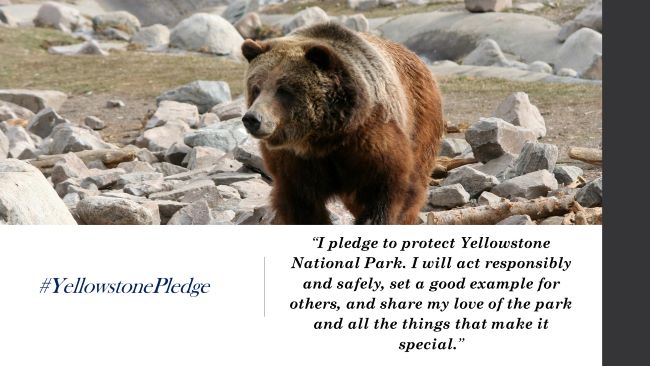
Final Thoughts on Planning Your Unforgettable Trek to Yellowstone & Grand Teton National Parks
When planning your unforgettable trek to Yellowstone and Grand Teton National Parks, carefully consider the best time of year to visit, the activities you want to do, and the logistics of your trip. Research weather patterns and peak tourist seasons to avoid crowds and make the most of your experience. Create a detailed itinerary that outlines the specific hiking trails, scenic spots, and wildlife viewing areas you want to explore. Remember to pack appropriately for varying weather conditions and terrain, and always practice Leave No Trace principles to help preserve the natural beauty of these parks for future generations. By thoughtfully planning every aspect of your trip, you can ensure a memorable and fulfilling adventure in these iconic national parks.
This trip should be on everyone’s bucket list. If this helped you to plan your trek through Yellowstone and Grand Teton National Park, please kindly drop us a comment about your itinerary. If we can improve this guide, we would love feedback. Please comment below.

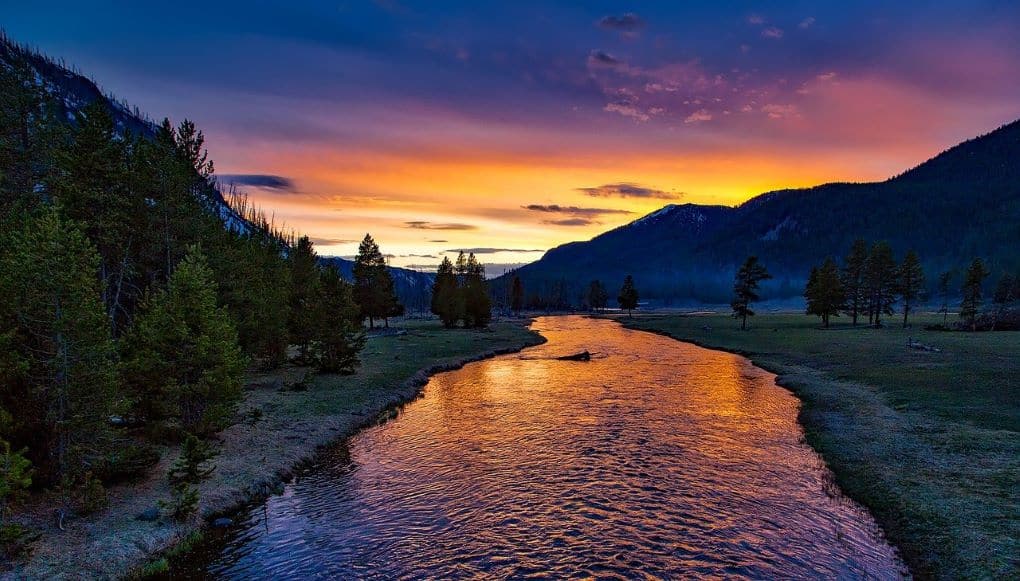

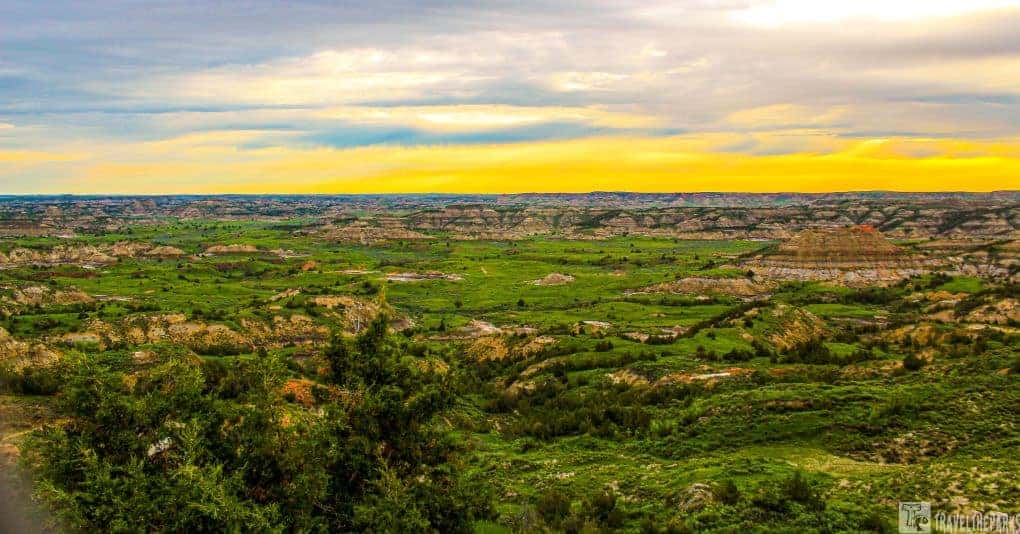

Sushanta B
Loved reading through all the details. What a great itinerary this is!! Helping me plan my trip! Thank you!
Travel the Parks
We are glad to help. Have a great vacation, you will love Yellowstone!